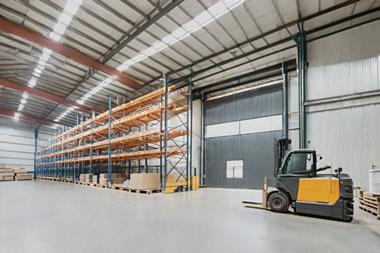In the realm of environmental, social, and governance (ESG) reporting, the spotlight typically focuses on factors like carbon emissions, social responsibility, and corporate governance.
However, there exists an often overlooked yet critical dimension that can significantly impact a company’s ESG performance, the indoor environment.
The indoor environmental quality (IEQ), encompassing air quality, thermal comfort, acoustic and visual environments, has a profound influence on not only the well-being of employees and the energy performance of the building but also a company’s overall sustainability efforts.
In this article, we will explore how a healthy indoor environment can play a pivotal role in enhancing ESG reporting, especially considering the rules of the new Corporate Sustainability Reporting Directive (CSRD).
Environmental impact: One of the fundamental pillars of ESG reporting is environmental responsibility. Companies are expected to reduce their carbon footprint, conserve resources, and minimise environmental harm. A key aspect of this is energy consumption. A well-controlled indoor environmental quality can contribute to energy and resource efficiency.
Energy efficiency: Implementing HVAC systems and other technical systems for achieving optimal indoor environmental quality that are well designed, maintained, and operated according to the building’s prerequisites and activities can reduce energy consumption, greenhouse gas emissions, and energy costs. This aligns with the “E” in ESG and demonstrates a commitment to environmental sustainability.
Resource conservation: Deficient building designs and inadequate indoor environmental quality control may lead to excessive use of energy and are clearly a waste of resources. In contrast, appropriate building design, comprising e.g., efficient solar shading, and well-functioning indoor environmental quality control reduces the need for excessive heating or cooling, and contributes to the creation of optimal indoor environments. The resources are necessary to achieve the desired outcome – an indoor environment with the desired qualities. This resource-conscious approach reflects positively on a company’s environmental initiatives, especially in the context of the CSRD, which places a stronger emphasis on disclosing environmental impact data.
Social responsibility: A high-quality indoor environment secures the health, comfort, well-being, as well as productivity of employees and low absenteeism and employer turnover. Companies that prioritise employees’ health, well-being and optimal working conditions are more likely to attract and retain top talents.
Improved health: Good indoor air quality can reduce the prevalence of illnesses related to air pollutants, such as allergies or respiratory issues, and reduce the risk of infectious diseases. Exposure to poor indoor air quality is estimated to result in the loss of over 2m healthy life years annually across the EU. When translated into economic terms, this represents an estimated cost of around €200bn each year, according to the European Ventilation Industry Association. Approximately 200m people in Europe suffer from conditions such as allergies, asthma, and chronic obstructive pulmonary disease (COPD).
Maintained productivity: The right temperature control, sufficient light, and clean and fresh air are examples of qualities that contribute to a more productive workforce. Employees working in an indoor environment with a high quality are healthier, happier and more productive compared to those working in a building with suboptimal conditions, up to 5% productivity loss can be expected according to Seppanen et al.
Governance and compliance: Efficient management of indoor environmental quality can also be seen as a testament to companies’ commitment to good governance and compliance. It is a matter of allocating sufficient resources to the process of designing, constructing, operating, and maintaining buildings with the right qualities. Besides achieving the quality of components and systems, these actions will ensure that personnel with the right qualifications have the time, budget, and responsibility necessary for checking the key functions and taking actions when needed. Companies that prioritise and promote indoor environmental quality in their buildings can lower maintenance and repair costs, ensuring optimal functionality and extending the lifespan of the buildings.
Regulatory compliance: Integrating indoor environmental quality standards and energy efficiency regulations into the company’s standard operating procedures and formalizing them as part of the corporate governance framework, not only ensures compliance with legal requirements but also strengthens the company’s commitment to sustainability and transparency. This approach aligns with the CSRD by promoting responsible governance and clear accountability, making these standards an integral part of the company’s operational and legal structure.
Risk mitigation: Proactively addressing indoor environmental issues can mitigate risks associated with employee health concerns, such as legal liabilities and reputational damage. This proactive approach aligns with sound governance principles, as advocated by the CSRD.
Investor and stakeholder relations: ESG reporting is not just about internal policies; it also plays a pivotal role in shaping external perceptions and investor decisions.
Investor attraction: Investors increasingly consider ESG factors when making investment decisions. A company with a transparent and well-defined indoor environment strategy, along with a strong commitment to managing its building stock, can engage in communicating about its indoor environment to promote energy-saving behaviours and ensure a safe, healthy, and productive space. This approach can attract socially responsible investors who recognize the long-term value of sustainable development, particularly when it takes occupant health into account.
Stakeholder trust: Demonstrating a commitment to the management of the indoor environmental quality builds trust among stakeholders, including customers, suppliers, and communities. It shows that a company is aware of its broader impact and is actively working to improve it, aligning with the transparency and trust-building goals of the CSRD.
Conclusion
Incorporating management of the indoor environmental quality into ESG reporting is not merely a cosmetic addition but a strategic imperative, especially in the context of the new rules on corporate sustainability reporting, the CSRD.
A high-quality indoor environment directly aligns with environmental responsibility, social responsibility, good governance, and stakeholder relations—key elements highlighted by the CSRD.
As ESG reporting continues to evolve and gain prominence, it is essential for businesses to recognise the hidden link between indoor environmental quality and sustainability, working towards a more holistic and responsible approach in compliance with the CSRD. This ties into the “S” in ESG, as happier and healthier employees contribute positively to a company’s social standing, a dimension that the CSRD places additional emphasis on.
Authors
- Lars Ekberg, professor in indoor environment and climate technology at the division of building services engineering at Chalmers University, Sweden
- Pawel Wargocki, professor. DTU Sustain department of environmental and resource engineering. Technical University of Denmark
- Ida Bryn, technical director HVAC, energy and environment, Multiconsult Norway
- Andrei Vladimir Litiu, executive director, EPB Center, Belgium
- John Rune Nielsen, CEO, IVL, Swedish Environmental Research Institute
- Philomena Bluyssen, Professor Indoor Environment at Delft University of Technology
All authors are members of the Swegon Air Academy think tank.


















